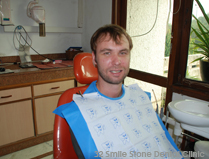5 Significant FAQ's about Dry Socket That You Need to Know

Alveolar Osteitis or dry socket happens to be a very painful condition that sometimes occurs after a complicated tooth extraction, wisdom tooth removal or surgical extraction. People who’ve had a dry socket are of the opinion that it is the worst kind of pain possible.
The best differentiator between normal extraction pain and dry socket pain is timing. Post extraction pain peaks and wanes within a 24 hour period, but dry socket pain peaks 3-5 days after the extraction and will take weeks to go away unless treated by a professional. At best dentist in Delhi we help the patient by providing the correct treatment for such cases to bring them relief.

Here are some vital FAQ’s regarding dry socket that will give you a fair idea about this condition.
Why does dry socket happen?
Dry socket occurs when the extraction socket fails to heal normally. After extraction of the tooth it is normal for a small amount of bleeding to continue from the socket. The bone and the gum socket will heal in a normal way provided a clot forms and remains. If the clot is lost or partially lost, the exposed bone with the empty socket becomes extremely sensitive to touch and gets painful taking a long time to heal. This is what a dry socket is.
When does dry socket happen?
It commonly occurs after difficult surgical extractions and complicated wisdom tooth extractions.
What are the signs and symptoms of dry socket?
Usually a few days after tooth extraction, dry socket appears. It is characterised by moderate to severe pain and this cannot be relieved with simple painkillers. Sign and symptoms of a dry socket include:
- Severe pain at the tooth extraction site a few days after your procedure.
- Loss of blood clot revealing an empty looking socket or visible bone.
- Discomfort that radiates to the jaw, ear, eye or temple.
- Bad breath and unpleasant taste in your mouth.
- Swollen glands and a low grade fever.
How can it be prevented?
Dry socket can be reduced by following the instructions of the dentist. After the extraction, you should avoid hot drinks and hot food for a day or two. The hot temperature promotes the breakdown of the blood clot in the socket and interferes with the clot formation. One can eat soft foods and lukewarm drinks, mashed potatoes, pudding, pasta and cottage cheese. But soups and drinks should be lukewarm.
You should stop smoking for 24 to 48 hours as this reduces the flow of blood to the gums which in turn delays healing.
You should also avoid rinsing the mouth, spitting and drinking through a straw as these can dislodge the clot.
How can dry socket be treated?
The dentist will examine the patient for confirming if it is a dry socket. They will start with flushing the socket with anti-bacterial mouthwash for removing the food debris. This will trigger the blood flow back to that portion and disinfect. Then a dressing called ‘Alvogyl’ is placed in the socket which consists of an anaesthetic, analgesic and a disinfectant. This may be repeated once or twice over the next few days. Consult our top dentist in Delhi who will be able to guide you further.
Above are some of the most significant FAQ’s about dry socket that will give you a clear idea about this condition so that you can take precautions before it is too late.
Testimonials

Dr. Gupta was very good. The professional teeth cleaning has fulfilled all my expectations.....
I came to Dr. Shivani Gupta with a great deal of pain and worry. But she took great care of me and provided top class service.....




